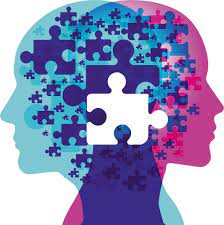Title: Gender Differences in Depression and Social Anxiety Disorder
Introduction
Depression and social anxiety disorder (SAD) are common psychological conditions that influence people around the world. While both genders can encounter these disorders, research recommends that there are critical gender differences in the pervasiveness, show, and treatment of depression and SAD. This exposition will investigate these gender differences and their suggestions for understanding and treating these disorders.
Prevalence and Epidemiology
Studies consistently document that women are much more likely to experience depression than men. The World Health Organization (WHO) estimates that globally, women are twice as in all likelihood as men to be identified with melancholy. On the other hand, SAD appears to be extra generic in women all through adolescence and early maturity, but the gender gap decreases with age.
Presentation and symptom
As far as shown, people might display various side effects of depression. Women are bound to report sensations of bitterness, uselessness, and guilt, while men might be bound to display outrage, peevishness, and recklessness of behaviour. Also, women with SAD may encounter more serious trepidation or anxiety in social circumstances, while men might be bound to utilize substances to adapt to social anxiety.
Risk Factors and Causes
Different elements add to the improvement of depression and SAD including biological, mental, and social variables. Women’s expanded risk of depression is frequently credited to hormonal changes, cultural assumptions, and adapting styles. Interestingly, men might be more helpless against depression because of variables, for example, socialization standards that put close-to-home articulation down. For SAD, gender differences in risk factors are less clear, even though women might confront more noteworthy cultural strain to adjust to social norms, which could add to social anxiety.
Treatment and Suggestions
Gender differences in the introduction of depression and SAD have suggestions for treatment draw near. Women might be bound to look for help for depression and answer well to psychotherapy and pharmacotherapy. Nonetheless, men might be more averse to looking for help. They may profit from mediations that line up with customary manly standards, like mental social treatment (CBT) that spotlights on critical thinking and conduct actuation. For Miserable, gender-delicate methodologies that address gender-explicit gamble factors and survival techniques might be more successful.
Conclusion
All in all, gender differences assume a critical part in the pervasiveness, show, and treatment of depression and SAD. Understanding these differences is essential for giving customized intercessions that address the special requirements of people with these disorders. Further examination is expected to investigate the basic systems driving these gender differences and to foster more viable and gender-sensitive treatments




